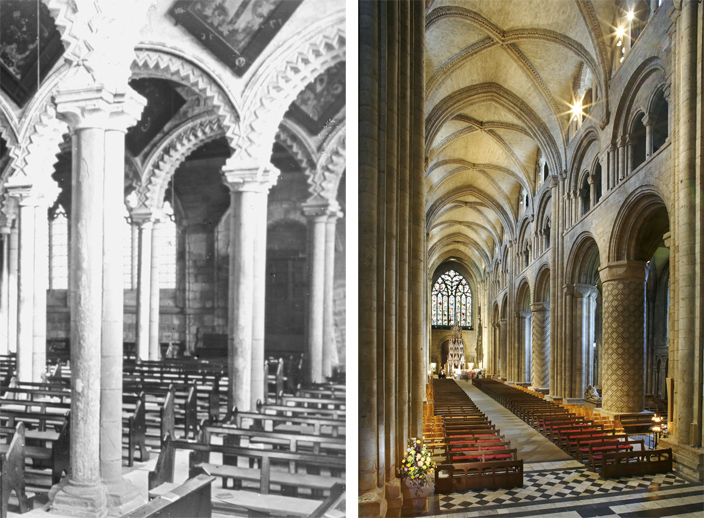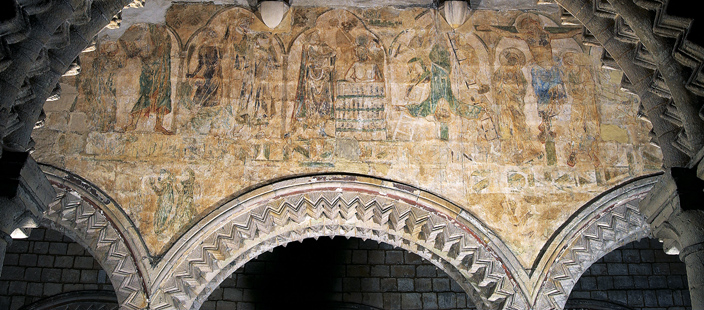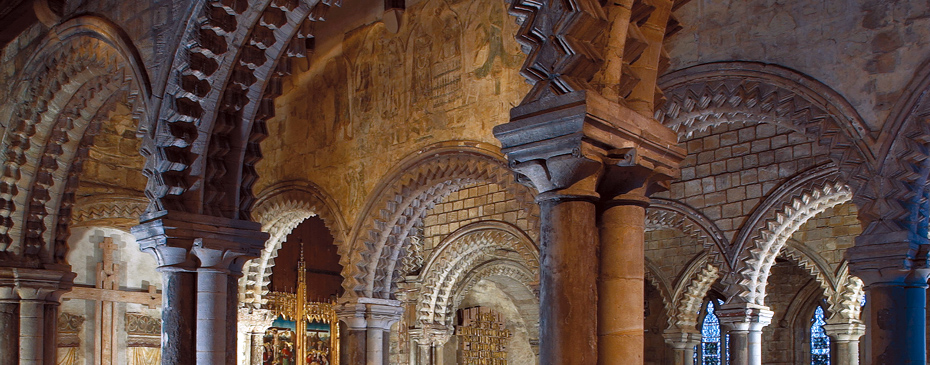The Galilee Chapel, at the Cathedral's western end, was originally built as a Lady Chapel. A line of Frosterley Stone marble defines the point in the Cathedral nave beyond which women were not permitted in medieval times.
Built in the 1170s, it was originally planned as an extension to the eastern end of the Cathedral, which was always full of pilgrims and therefore cramped. However, due to a change in the level of the bedrock from the rest of the Cathedral, the walls kept on cracking during the construction and all attempts to build it at the eastern end of the Church seemed to fail. This was taken as a sign of divine intervention, and it was built in its current location at the western end of the Cathedral instead.
What is in its Name?
The name Galilee was often used to designate the space at the western end of a church, from which processions start their entry into the building, recalling Christ’s entry into Jerusalem from Galilee.
How is it Different from the Main Body of the Cathedral in Architectural Terms?
While the main body of the Cathedral is solid and massive, the Galilee Chapel is much ‘lighter’. This isn’t only because it is a much smaller, lower building, and so it could afford to be light, but also because it was forty years along in the transition to the Gothic style that was about to flourish. The use of slender and graceful structural elements, such as the columns in the Galilee Chapel, hints at the direction that later European buildings would take.

Compare these two images. The Galilee Chapel on the left has much more slender columns than those of the nave of the Cathedral in the image on the right. The rows of pews in both images help indicate the scale of the two photographs, which are very different and could otherwise be misleading.
© Durham Cathedral and Jarold Printing
A Forest of Columns
The slenderness of the columns of the Galilee Chapel, and the rows of arches with a zig-zag profile create the sense of airiness. In its spirit, the chapel conveys the same impression as some of the Islamic buildings being constructed in Andalusia. Were there cross-cultural influences? Very possibly.
Find out more about possible Andalusian influences in Durham Cathedral.
The Remains of Paint
The Galilee Chapel is one of the only places in the Durham Cathedral Complex where murals with figural representation still remain. Much of the Cathedral would have been painted in this way – but the building was white-washed during the Reformation, and when the whitewash was removed during the Victorian era most of the murals were inadvertently scraped away as well.

The wall paintings in the Galilee Chapel give some indication as to what Durham Cathedral would have looked to prior to the 16th century, when the building was whitewashed. Telling religious stories through images was important, as many people would have been illiterate.
This scene probably dates from the 13th or 14th century and depicts the apostles as martyrs, dying for their faith.
© Durham Cathedral and Jarold Printing

